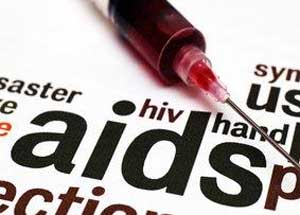- Home
- Editorial
- News
- Practice Guidelines
- Anesthesiology Guidelines
- Cancer Guidelines
- Cardiac Sciences Guidelines
- Critical Care Guidelines
- Dentistry Guidelines
- Dermatology Guidelines
- Diabetes and Endo Guidelines
- Diagnostics Guidelines
- ENT Guidelines
- Featured Practice Guidelines
- Gastroenterology Guidelines
- Geriatrics Guidelines
- Medicine Guidelines
- Nephrology Guidelines
- Neurosciences Guidelines
- Obs and Gynae Guidelines
- Ophthalmology Guidelines
- Orthopaedics Guidelines
- Paediatrics Guidelines
- Psychiatry Guidelines
- Pulmonology Guidelines
- Radiology Guidelines
- Surgery Guidelines
- Urology Guidelines
WHO updates provisional guidelines on HIV treatment

Updated guidelines on first-and second-line treatment, post-exposure prophylaxis, and early infant diagnosis of HIV.
For more details click on the link: www.who.int
Following are the major recommendations:
- A DTG-based regimen may be recommended as a preferred first-line treatment for:
- adults and adolescents (moderate-certainty evidence).
- women and adolescent girls during the periconception period (very low-certainty evidence); should be used cautiously.
- Infants and children with approved DTG dosing (low-certainty evidence).
- A RAL-based regimen may be recommended as:
- Alternative first-line regimen to infants and children for whom approved DTG dosing is not available (low-certainty evidence).
- Preferred first-line regimen for neonates (very low-certainty evidence).
- DTG has been found to be effective for pregnant women and has been found in breast-milk, resulting in significant plasma concentration in infants; hence it may reduce the mother-to-child transmission of HIV infection.
- The needs and perceptions of women, their families and communities are central to providing care and implementing programmes and services. A woman-centered approach is supported by 2 guiding principles, promoting human rights and gender equality.
- DTG in combination with an optimized nucleoside reverse-transcriptase inhibitor may be recommended as a preferred second-line treatment in adults with HIV (moderate-certainty evidence) and in children with approved DTG dosing (low-certainty evidence) who failed to respond to non-DTG-based regimens (moderate-certainty evidence).
- The HIV post-exposure prophylaxis regimen with 2 ARV drugs is effective in adults and adolescent and children, but 3 drugs should be preferred as follows:
- DTG is recommended should be preferred as a third drug (low-certainty evidence).
- When available, atazanavir/ritonavir, darunavir/ritonavir, lopinavir/ritonavir, and RAL may be considered as alternative third drug options (low-certainty evidence).
- An indeterminate range should be used to improve the accuracy of all nucleic acid-based early infant diagnosis assays.
For more details click on the link: www.who.int
Next Story
NO DATA FOUND

Disclaimer: This site is primarily intended for healthcare professionals. Any content/information on this website does not replace the advice of medical and/or health professionals and should not be construed as medical/diagnostic advice/endorsement or prescription. Use of this site is subject to our terms of use, privacy policy, advertisement policy. © 2020 Minerva Medical Treatment Pvt Ltd